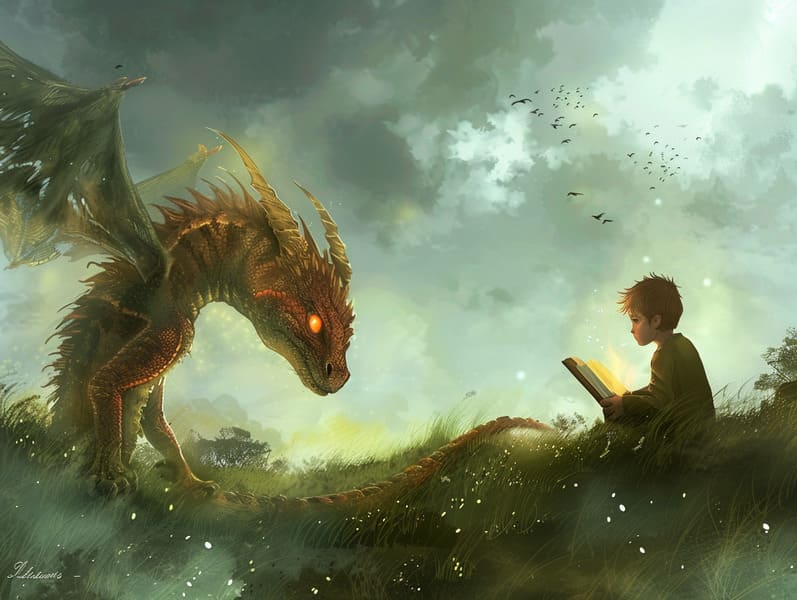Exploring the Roots of Traditional Fairy Tales and Its Immortal Delight.
Exploring the Roots of Traditional Fairy Tales and Its Immortal Delight.
Blog Article

Grimm's fairy tales have old origins. These stories have been told from one generation to the next millennia before they were ever documented. They were born from a variety of cultures, including Eastern traditions. They were initially disseminated among older generations, often carrying themes and messages reflective of the societal norms and beliefs of the time.
The famous Grimm duo, Jacob and Wilhelm, were among the first to compile and publish many of these beloved tales. Their volume, "Grimm's Fairy Stories," included narratives like "Cinder Maid," "Hansel and Gretel," and "The True Story of Snow White," which have since become mainstays in the world of iconic fairy tales. Similarly, Hans Andersen's fantastical tales, such as "The Mermaid," and "The Duckling's Story," have captured hearts worldwide, ensuring their place in the pantheon of iconic fairy tales.
Despite their historical roots, these tales remain as meaningful as ever, especially as bedtime stories for kids. These magical stories are now available in diverse formats, including vibrantly illustrated books, captivating animations, and digital fairy tales.
Their lasting appeal can be linked to several magical reasons:
Key Lessons: Classic fairy tales often whisper important moral lessons. Narratives like "The Tale of the Boy Who Cried Wolf" teach the significance of truthfulness, while "The Tale of the Tortoise and the Hare" stress the benefits of tenacity and meekness. These stories offer children clear distinctions between truth and falsehood, helping to shape their moral compass in a subtle yet important way.
Compassion and Insight: Fairy tales frequently showcase individuals facing obstacles and hardships, urging young listeners to empathize with their struggles and support their triumphs. For instance, "The Tale of Beauty and the Beast" emphasizes the value of looking past the exterior to comprehend the true character of a soul, building awareness and comprehension.
Cultural Recognition: Many classic fairy tales are deeply ingrained in the cultural contexts from which they originated. Exploring these stories can provide intriguing perspectives into different beliefs, promoting a sense of cultural appreciation and recognition.
Inventiveness and Fantasy: The enchanted elements in fairy tales—mythical creatures—ignite children’s imaginative ideas. These stories lead readers to imaginary realms, fostering innovative dreams and a sense of marvel that lasts a lifetime.
Old fairy tales are not only mesmerizing but also instructive. They work as alluring tools in strengthening various brain and heart skills in young ones. When traditional fairy tales are told out loud, they cultivate language acquisition by bringing new language items and complicated sentence structures. This practice also nurtures hearing abilities and attention span, as children stay focused, keen to see what happens next.
Furthermore, analyzing the themes and characters of ancient fairy tales can advance thinking skills and evaluative skills. Kids are guided to spot patterns, forecast, and figure out cause and effect. These deliberations also ease the young say their thoughts and feelings, enhancing their emotional intelligence.
In today’s technological age, the availability of online storybooks has made these narratives more available than ever. Internet sites and apps extend broad selections of classic fairy tales that can be browsed or played anytime, anywhere. Fairy tales narrated are particularly well-liked, offering an fascinating method for the young to enjoy these charming stories. Voice books and read-to-me stories lead characters and settings to life, often augmented by magical music and melodies that amplify the tale-telling adventure.
The unfading fascination of classic fairy tales lies in their ability to adapt to contemporary times while keeping hold of their fundamental ideas. Contemporary adaptations of these stories often feature more multicultural characters and modern settings, making them familiar to today’s audience. However, the essential messages of courage, generosity, and rightness remain unchanged, continuing to affect young readers of all ages.
Timeless fairy tales also offer a sense of solace and homeliness. They furnish a ordered narrative with a recognizable beginning, middle, and end, often ending with the finalization of conflicts and the triumph of right over wrong. This assuredness can be soothing for young readers, introducing a sense of assuredness in an fluid world.
Ancient fairy tales continue to bewitch and guide new generations, maintaining their grandeur and importance in modern society. As children's bedtime stories, they deliver up a perfect blend of charm and understanding, nourishing moral values, empathy, and creativity. The abundance of online fairy tales and the well-liked nature of fairy tales told out loud guarantee that these old stories remain available to new generations.
By defending and telling these fairy tales, we continue to extol the rich tapestry of inventiveness and cultural heritage. Whether you are experiencing a colorful picture book, enjoying a electronic collection, or listening on an spoken story, the captivation of Grimm's fairy tales is always within reach. These tales demonstrate of the perpetual essence of storytelling and its ability to read more draw us together across centuries and lands.
Even if you are enjoying a gorgeously illustrated book, enjoying a digital collection, or listening via an read-aloud story, the loveliness of traditional fairy tales is always within reach.
These tales highlight of the unfading strength of fairy tales and its ability to bind us across centuries and lands, establishing a link that delights and instructs alike.